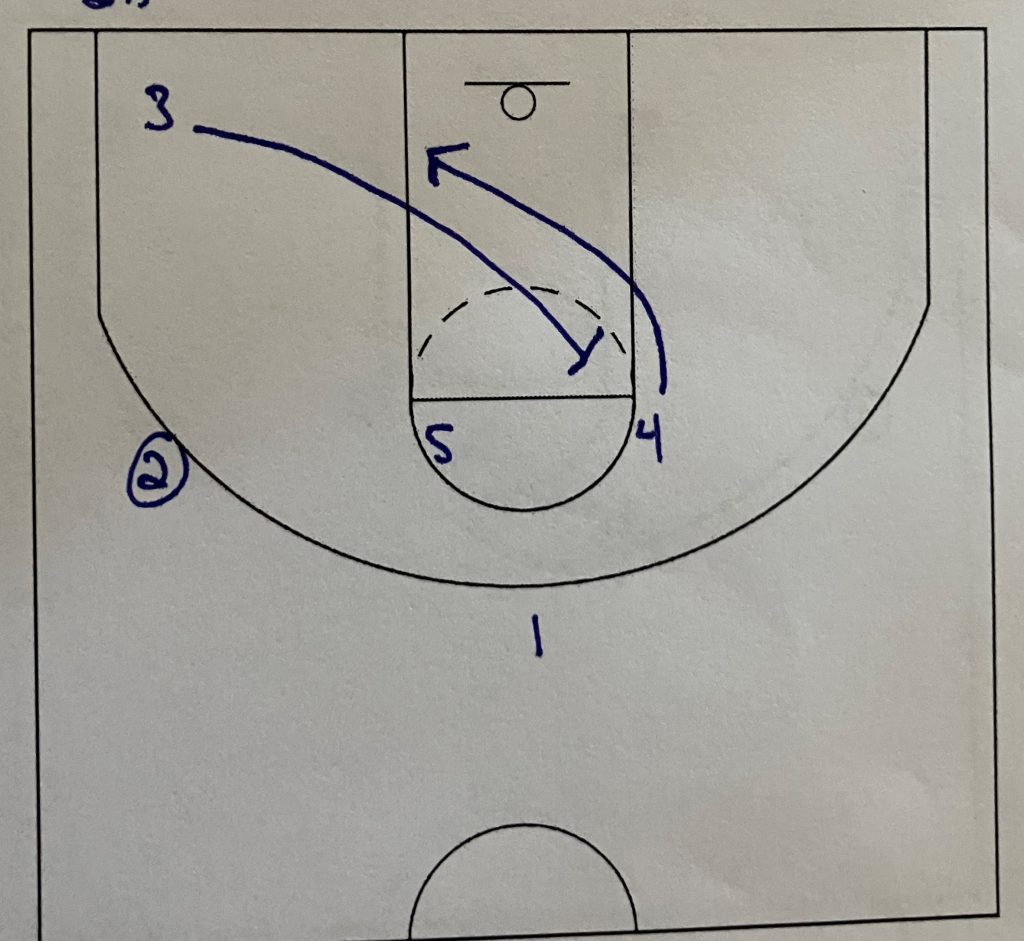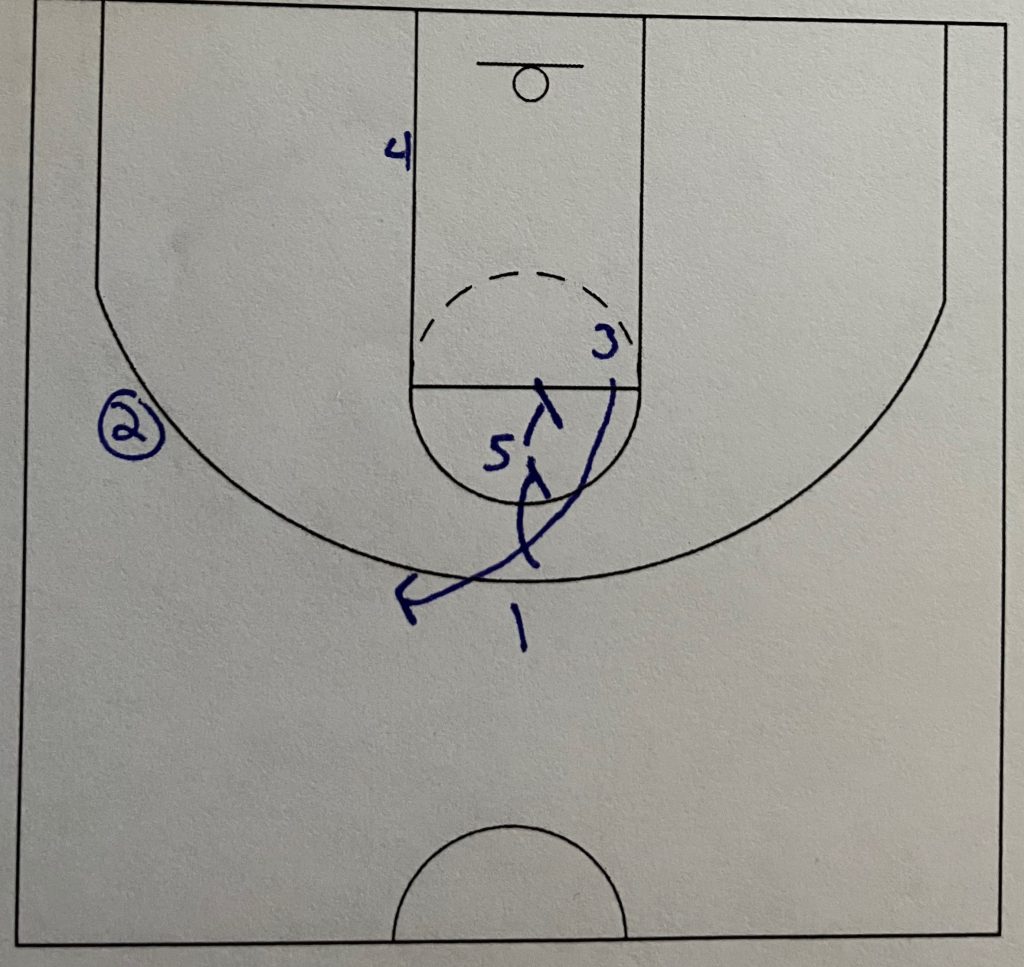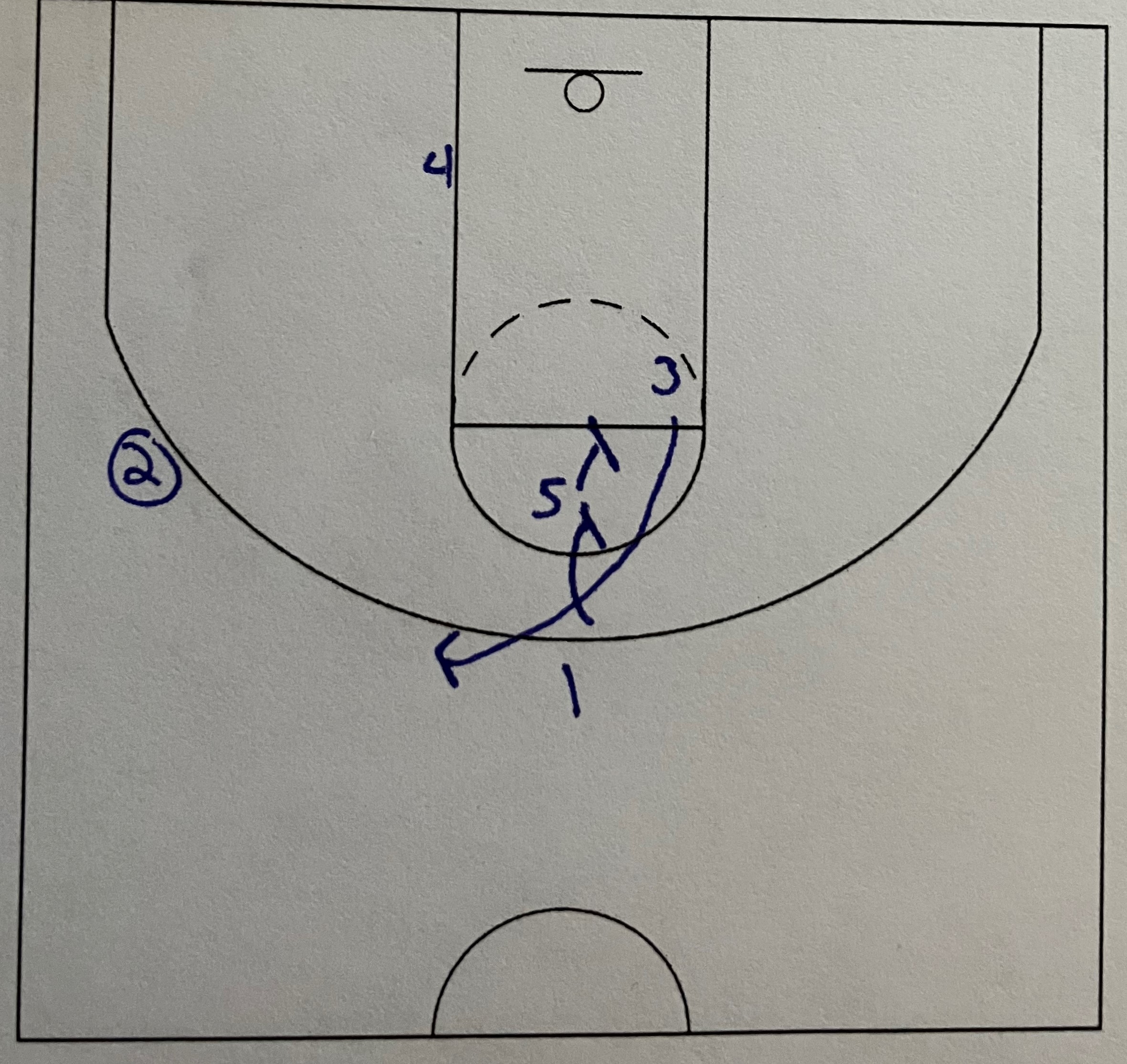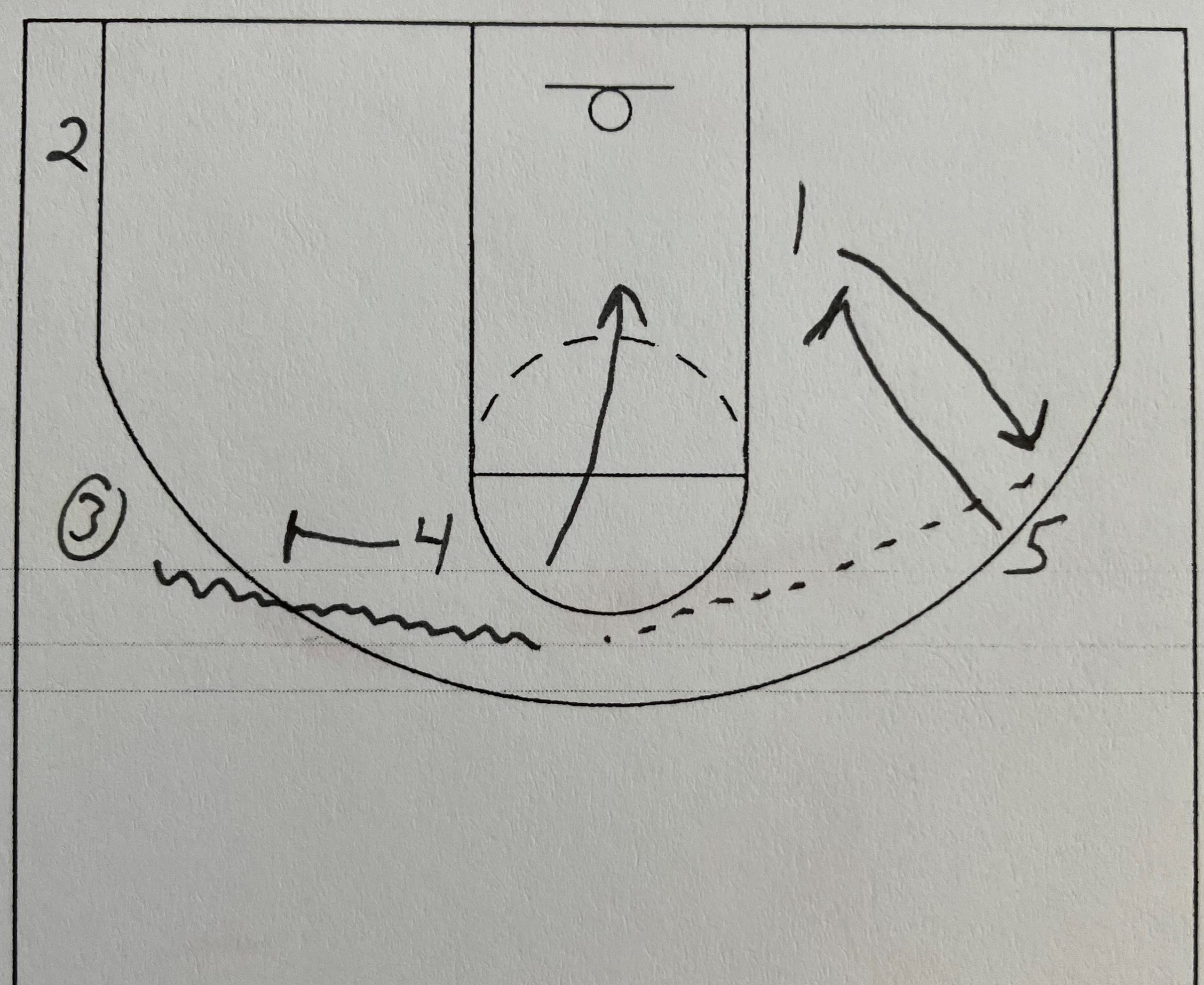One of the movements I love to utilize is any screen the screener actions. A good initial screen will get the screener open more than anything else in offensive basketball. A good screener starting a screen the screener action is one of the hardest actions to guard defensively. This quick hitter masks the screen the screener action making it harder for the defense to read the play before its too late.
A screen the screener does not allow the defense to help off the initial screen because then that defender is too late getting back around the 2nd screen. When the 2nd screen is also a double screen then it becomes very hard for a defense to properly stop this play. If the defense does not help on the initial screen then the offense should have an easy layup right at the basket.
There is a lot going on with this quick hitter but it is not a hard play for players to learn. While the offensive actions are complex, the movements are simple. This is a hard to guard but easy to run play that makes it perfect for all levels of basketball. The younger grades are more likely to get the 1st screen open while high school teams are more likely to get the 2nd screen double open. As players get older and better defensively, this quick hitter has enough going on to make it very hard to guard.

The initial start of the quick hitter is an Iverson cut. The cutter will be the passer and the non wing cutter will be the shooter at the end of the play. This could help you as a coach to decide who is dropping to the corner and who is running the Iverson cut.
In the diagram, the guard(2) is running the Iverson cut across the floor to get open and the initial entry pass. The forward(3) is dropping to the corner/block to open the wing area for the guard(2) to have the space to catch the pass.

On the catch, the forward(3) is coming up across the lane to set a backscreen for the big(4). The big(4) is diving to the block for either a catch and shoot or a post up feed from the guard(2).
A team with a good back to the basket post up player can use this initial setup and screen can help to isolate the post player for a post entry. The help will struggle to get there because of everything else taking place around them. Being able to isolate a good post player can be difficult at times. So, when plays can help to isolate them and get them another touch in the post is always a good thing.
If the backscreen cut and post get nothing then the play continues with the screen the screener action. The key is the better screen the forward(3) sets for the big(4), the more likely the forward(3) will be open on the last action.

The center(5) and point(1) come together either as a straight double screen or a stagger double screen to get the forward(3) open coming back up to the top of the key. I prefer the stagger because both the center(5) and point(1) can adjust their positioning for the double screen depending on how the forward’s(3) defender helps the backscreen.
If the defender does not help at all and stays with the forward(3) then the center(5) and point(1) can move farther away from midline to give more space for the forward(3) to come off the double screen running more towards the guard(2).
If the defender helps a lot and steps down into the post then the center(5) and point(1) can move more ballside and give the forward(3) more space for the catch and shoot by treating the double screen almost as a flare screen.
The ability of the center(5), point(1) and forward(3) to read the defense and adjust their runs and positioning will make this quick hitter even harder to guard. If nothing else the forward(3) can find the center(5) and point(1) and run off their shoulder. The center(5) and point(1) can find the defender and move to get into their path as much as possible.
Conclusion
A simple play but very hard to defend. The Iverson cut gets the defense moving and reading frontside before the backscreen is taking place on the backside. The defense’s eyes are reading ballside while the action is taking place backside.
The screen the screener action is never an easy thing to guard. The single screen can give the big(4) and easy layup or the forward(3) a wide open 3 depending on how the defense helps to defend the backscreen.
Then the screen the screener action is elevated by using a double screen rather than just a single screen. This is a complex play to defend but simple to run. It has multiple actions and multiple chances to score. It puts a lot of stress on the defense and if a single defender makes a mistake then an open shot is likely.




